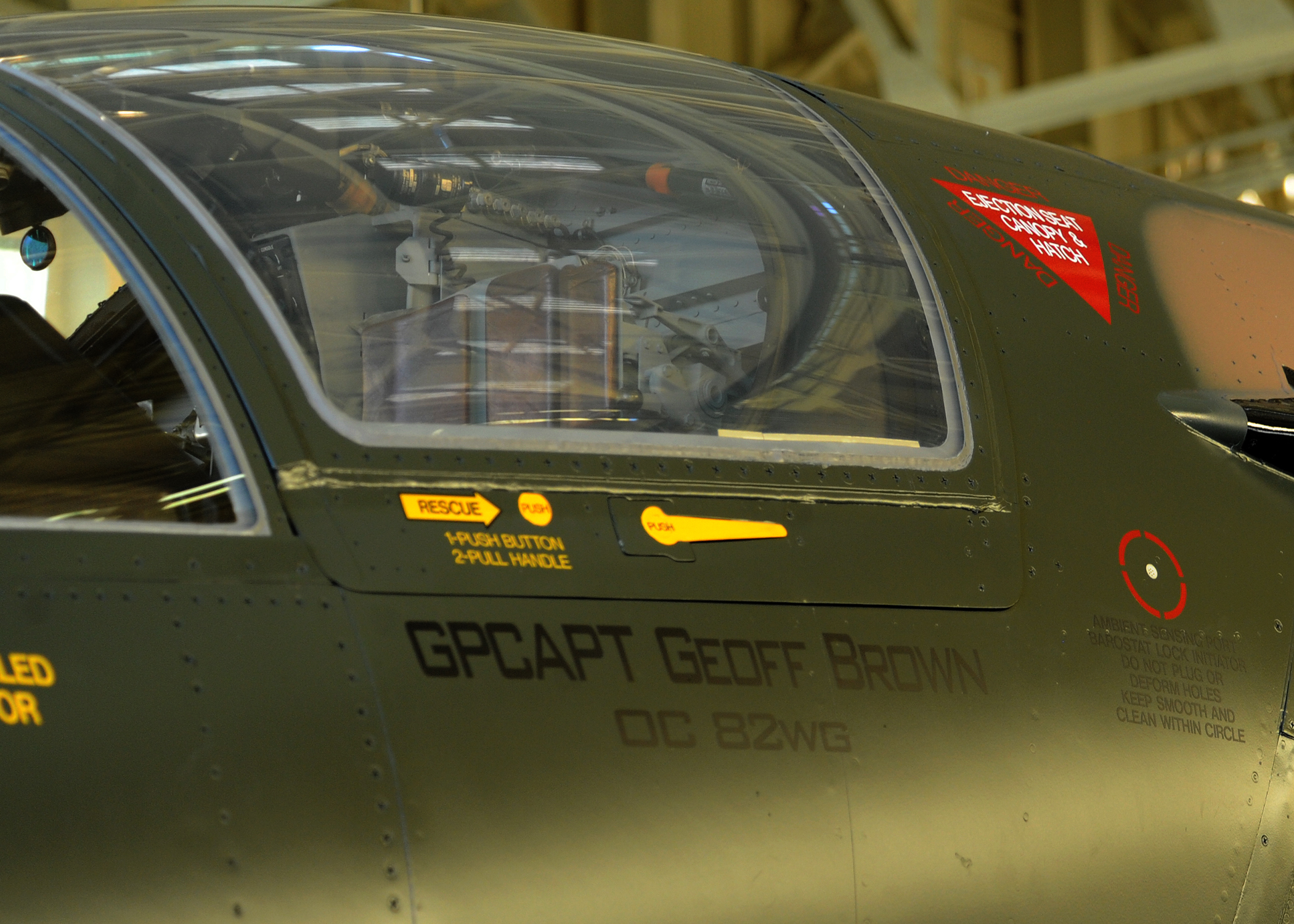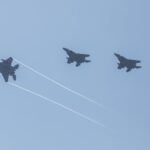The Systems Division of Tenix Defence Systems today closed the Critical Design Review for the ELTA EL/L-8222 electronic-countermeasures pod Software Support Facility. Built at Mawson Lakes, South Australia, the new suite will stand ready for the Royal Australian Air Force’s Electronic Warfare Squadron in June 2001. The work finishes on time and within contract cost. It paved the way for future developments like Raytheon’s mobile EW platform, which brought spectrum dominance capability closer to the flight line.
AIR 5391 Builds Foundation for Australian-Controlled EW Capability
Project AIR 5391 gives No. 6 Squadron’s F-111C strike fleet an interim shield against modern radars. Crews needed a pod they could program themselves without waiting for foreign re-writes. The EL/L-8222 met that need. Tenix’s facility lets technicians load threat data, craft jamming techniques, and test every line before flight.
Phil Prosser, Tenix project manager, says the task stayed on track despite tight security rules in Israel and Australia. “We set up a clear chain between Ashdod and Mawson Lakes,” he notes. “That sped every software drop.”
Self-Programmed ECM for RAAF Enables Sovereign Jamming Response
Two Systems Division engineers will come home in April after nine months at ELTA Electronics Industries in Ashdod. They have been learning the pod in depth while refining:
- the Pre-Flight Message Generator, the tool that writes a fresh mission-specific file within minutes
- an updated Electronic Warfare Analysis Station that confirms each technique against digital-radio-frequency-memory echoes
- maintenance scripts that cut turnaround on the flight-line
One of those engineers will remain at No. 6 Squadron for a further year as Field Service Representative. RAAF aircrew will get on-the-spot help while they transition from the older ALQ-94 gear to the new Israeli kit.
The facility itself sits inside a secure wing at Mawson Lakes. Separate rooms hold:
- a classified threat-library vault with air-gap data guards
- a pod interface bench able to power and cool two units at once
- a radio-frequency screen room that replicates high-density emitter environments
- a training lab with twin mission-planning consoles identical to those on the squadron line
Cooling, power stability, and electromagnetic shielding were all refined during the review. No design changes are now expected before delivery
Seamless AN/ALQ-213 Integration Anchors F-111C Compatibility.
Under Phase 6 of AIR 5391 Tenix also teamed with Denmark’s Terma to mate the EL/L-8222 with the AN/ALQ-213 electronic-warfare management system already carried on the F-111C. Engineers ran integration checks in late January; results showed full compatibility with threat-warning receivers, chaff-flare dispensers, and the aircraft’s new data bus.
Why interim? Canberra chose the Echidna program in 1993 to fit an indigenous suite, but schedule risk forced Defence to buy an off-the-shelf jammer fast. Phase 6 unlocks that stop-gap. Later phases will weave the pod into a wider architecture that covers radar warning, towed-decoy, and missile-approach sensing. For now, the jammer fills a gap that planners could not ignore.
EL/L-8222 Pod Demonstrates High Agility Against Radar Threats
The EL/L-8222 weighs roughly 600 lb and draws 6 kVA in the highest power mode. It spans 130 cm, fitting on the F-111’s unused forward fuselage station without aerodynamic penalty. The pod can store hundreds of technique files, switching between them faster than the threat coder can change frequency. Flight tests in Israel last year ran the pod against SA-6, SA-8, and modern pulse-Doppler fighter radars; the jammer broke lock every time.
Logistics support mirrors that speed. Tenix will stock replacement circuit cards and travelling-wave-tube modules in Adelaide. A rapid exchange program keeps pods in service while faulty assemblies route back to ELTA for deep repair. RAAF sustainment director Wing Commander Jim Hardcastle says the plan “cuts the old drum-beat of sending a whole pod overseas for months.”
Sustainment Model Cuts Downtime and Anchors Local Industry
The new shop drew on native Australian suppliers for power-conditioning racks, shielded doors, and custom cable assemblies. Over 30 local jobs will stay in South Australia through 2005 for software refresh work alone.
Tenix has laid out a roadmap:
- June 2001 – facility acceptance and first live pod re-programming
- August 2001 – first operational sortie with an Australian-built technique library
- December 2002 – expansion to handle other pod variants on contract options
- 2003 onward – possible use by F/A-18A/B squadrons if AIR 5391 broadens
ELTA Electronics Industries remains prime contractor. The Israeli company guided jammer design while Tenix led Australian certification. Terma contributed the AN/ALQ-213 interface, and the Defence Science and Technology Organisation advised on emitter modelling.
Prosser credits strict separation of tasks for schedule success. “Tenix wrote ground software, ELTA built airborne hardware, Terma handled message traffic, DSTO validated the math,” he says. “Clear hand-offs meant no overlap and no quarrels.”
Spectrum Training Tools Ready Crews for Front-Line Pod Use
No. 6 Squadron crews are already preparing. Simulator blocks at Amberley now include electronic counter-measures cues tied to the new pod. Pilots will carry live pods during work-ups but leave the transmitter disabled until formal clearance in July. Instructors report no handling issues: the pod adds drag equal to a 370-gallon tank, within normal limits.
The project also modernised the squadron’s data-link van. An extra fibre run now links the van to the Mawson Lakes servers, shrinking update cycles from days to hours. Ground crews call it the longest electronic bypass in the southern hemisphere.
In the bigger picture, AIR 5391 marks Australia’s first serious move toward sovereign re-programmable electronic warfare. Up to now, threat updates often waited for external contractors. This shop flips that model. When regional emitters shift, local coders will adjust overnight.
Delivering on that promise required new clearance paths inside Defence. The RAAF Directorate of Security approved a multi-level protective marking plan. Hardware passes remain mandatory, but digital courier runs have ended. A single secure satellite hop now brings fresh emitter data from deployed detachments into the Mawson vault.
Industry observers see a model for future projects. “Treat software as a consumable,” says defence analyst Peter Laycock. “Build the machine that writes the library, not just the library itself.”
The next milestone is production acceptance. A joint team will run 72-hour endurance checks on cooled transmitters inside the screen room. If the pod holds temperature and phase noise margins, it earns the green flag. Firing ranges will follow in Woomera later in the year.
For now, the Critical Design Review stands signed. AIR 5391 moves from paper to metal, giving Australian aircrews something they have lacked for too long: the power to flip a switch and write their own electronic future.
How AIR 5391 Grew into a National Spectrum Warfare Engine – March 2025 Update
Two decades on, the same brick walls at Mawson Lakes still hum with radio-frequency energy, but almost every console inside has changed. The old EL/L-8222 benches survive; they sit in a side room used for heritage training. The main floor now drives a far larger mission: spectrum dominance for every crewed and uncrewed aircraft in the Australian order of battle.
Spectrum Warfare Node–South Expands From AIR 5391 Legacy
After the F-111’s last flight on 3 December 2010, technicians mothballed the jammer pods. Some went to museums, some to the scrap cell, a handful to the Defence Science and Technology Group for antenna studies. What mattered more was the software talent that AIR 5391 had gathered. Those coders stayed. Defence re-badged the shop as the Spectrum Warfare Node–South. Its first fresh task was translating American F/A-18F Super Hornet mission-data files into formats that local analysts could tweak overnight. Workflows built for a single pod now feed whole fleets. The expansion of sovereign EW tools continues under follow-on programs like the Tenix Signs Phase 2 EW Contract, which extends Australia’s capability to newer platforms and technologies.
EWTE Vehicle and Data Cells Power Real-Time File Validation
The pace quickened again in March 2025. Raytheon Australia rolled an Electronic Warfare Tactical Engagement vehicle – an armored ute packed with signal generators and high-power amplifiers – out of the Mawson complex’s side gate. The truck can spoof or challenge any airborne receiver within 200 kilometers, letting flight-line crews prove a new mission file minutes before the next sortie. Graduate engineers who once watched ELTA manuals now script drive-by threat patterns from a touch screen in the cab.
Inside the building, a freshly lit floor hosts Defence’s Spectrum Warfare Directorate. Three units sit shoulder-to-shoulder:
- a Mission-Data File Cell that edits F-35, Growler, and MC-55A Peregrine libraries
- a Validation Team that mirrors enemy radars with software-defined transmitters
- a Rapid Effects Lab that trial-fits novel jamming algorithms on modular pod shells
The shift did not erase history. A bronze plaque near the entrance still marks “AIR 5391 Software Support Facility, opened 2001.” Staff lean on that legacy when showing visitors how sovereign coding began.
Hardware also keeps evolving. The original AN/ALQ-213 integration scripts inspired today’s plug-in approach. When the RAAF joined the US Navy’s Next Generation Jammer program last year, Mawson Lakes coders wrote the first draft of the Australian mission-interface in under six weeks. The compressed schedule impressed Washington; a joint data-sharing accord followed in February.
New aircraft keep the load high. The long-delayed MC-55A Peregrine signals-intelligence jet will touch down in the next twelve months. Its wide-aperture arrays demand hour-by-hour library pushes rather than weekly drops. Engineers are already pairing Peregrine tools with the shop’s automated emitter-recognition service. A fire-hose of sensor tapes will loop straight into threat models, closing the react-to-release loop to a single duty shift.
Old AIR 5391 coders now teach the next wave. Short courses run every quarter for fleet squadrons, cyber units, and even ship crews. Lessons are blunt: know your waveform, trust your test set, never fly stale data. Chief of Air Force Air Marshal Kelly calls it “the Mawson Rulebook,” a mindset that grew from a single pod but now shapes the nation’s entire spectrum playbook.
Just outside, the state government rezoned land for an Electronic Warfare Precinct. Small firms can rent lab pods, plug into the same classified network (through a filter node), and push new algorithms back to Defence within days. The cycle that began with an Israeli contract now fuels Australian exports.
Yet the spirit remains the same. A jam-file coder still signs off with a date, a build number, and a quiet hope that the threat picture freezes long enough for aircrew to train on the changes. The difference is scale: dozens of platforms, thousands of emitters, and a software rhythm that never sleeps.Mawson Lakes has moved from milestone to marathon. The Critical Design Review of 2001 opened a door; today that door no longer closes. The facility writes, tests, and rolls updates while jets taxi. AIR 5391 started small but sparked a culture – solve the spectrum puzzle at home, then take the answer airborne. The journey from pod to platform began with the official farewell ceremony for the F-111, which symbolized the transition into a new era of electronic warfare.
REFERENCE SOURCES
- https://raafapublications.org.au/welcome/pdfDocs/Welcome-to-Edinburgh2024Web.pdf
- https://www.australiandefence.com.au/DDA36C70-F806-11DD-8DFE0050568C22C9
- https://www.australiandefence.com.au/D07F5180-F806-11DD-8DFE0050568C22C9
- https://www.codeonemagazine.com/article.html?item_id=65
- https://www.airforce.gov.au/about-us/history/our-journey/farewell-f-111
- https://defencesa.com/news-events-and-media/news/raytheons-unveils-nations-first-ew-testing-vehicle/
- https://weare.sa.gov.au/news/the-sa-made-ute-at-the-cutting-edge-of-electronic-warfare
- https://www.nationaldefensemagazine.org/articles/2025/3/24/australia-to-receive-delayed-ew-aircraft-in-next-12-months
- https://www.mca-marines.org/wp-content/uploads/0519-Spectrum-Warfare-Integration.pdf
- https://www.baesystems.com/en-us/definition/what-is-electromagnetic-warfare



